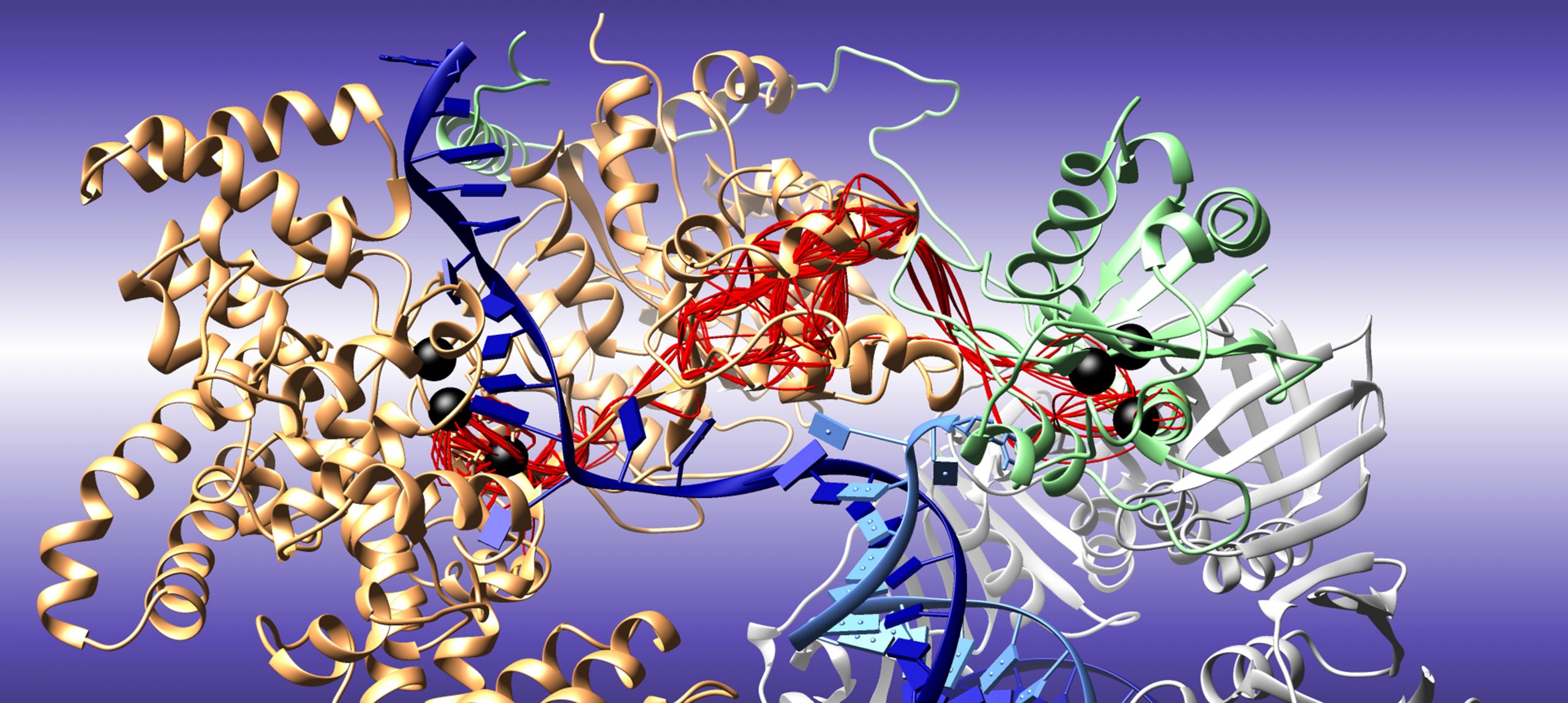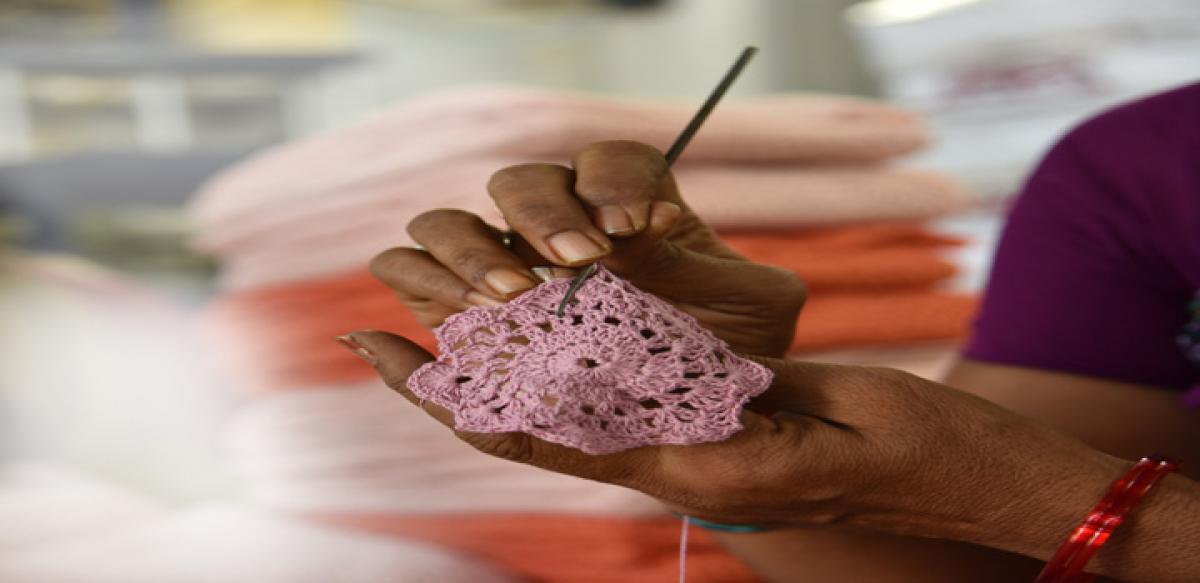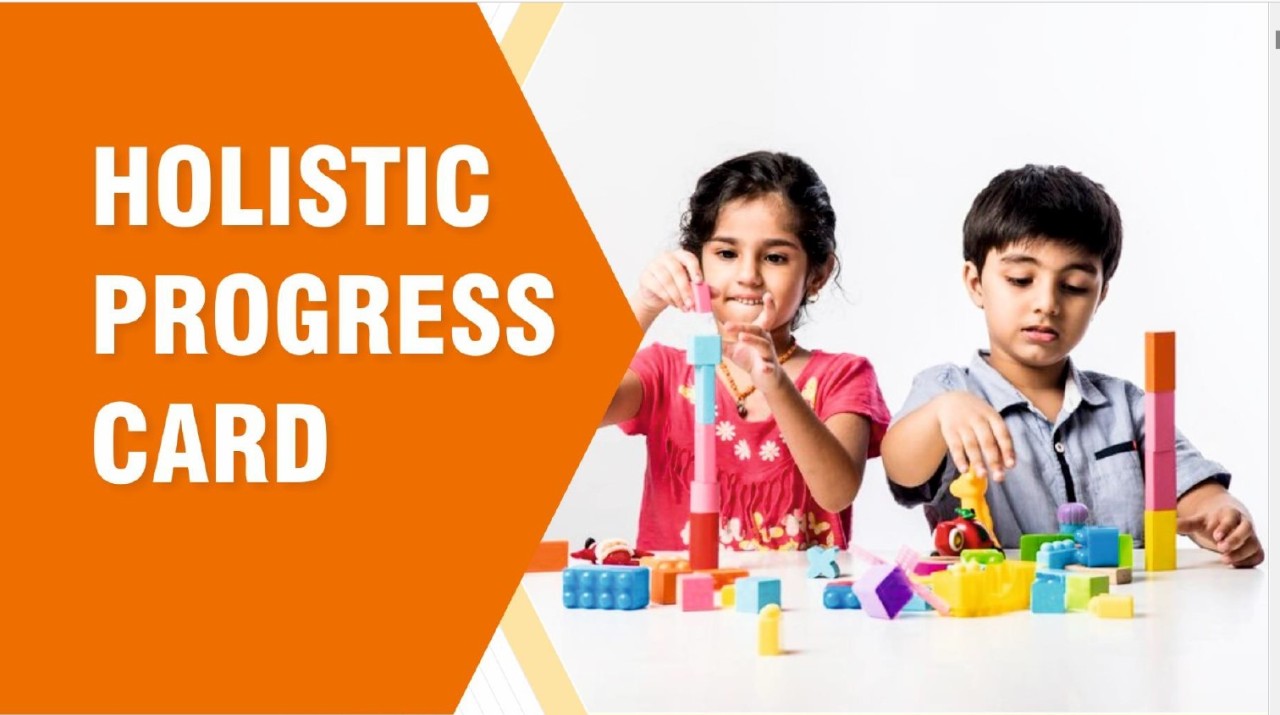Current Affairs – 6 March 2024
Current Affairs – 6 March 2024
RAD51
Researchers recently identified the RAD51 protein as a key player in preventing DNA re-replication.

About RAD51:
- RAD51 recombinase (RAD51) is a gene that encodes a protein that functions in homologous recombination and DNA repair.
- RAD51 has the function of finding and invading homologous DNA sequences to enable accurate and timely DNA repair.
- The RAD51 protein binds to the DNA at the site of a break and encases it in a protein sheath, which is an essential first step in the repair process.
- Breaks in DNA can be caused by natural and medical radiation or other environmental exposures, and also occur when chromosomes exchange genetic material in preparation for cell division.
- In the nucleus of many types of normal cells, the RAD51 protein interacts with many other proteins, including BRCA1 and BRCA2, to fix damaged DNA.
- The BRCA2 protein regulates the activity of the RAD51 protein by transporting it to sites of DNA damage in the nucleus.
- The interaction between the BRCA1 protein and the RAD51 protein is less clear, although research suggests that BRCA1 may also activate RAD51 in response to DNA damage.
- By helping repair DNA, these three proteins play a role in maintaining the stability of a cell’s genetic information.
What is Homologous recombination?
- It is a type of genetic recombination in which genetic information is exchanged between two similar or identical molecules of double-stranded or single-stranded nucleic acids (usually DNA as in cellular organisms but may also be also RNA in viruses).
- It is widely used by cells to accurately repair harmful DNA breaks that occur on both strands of DNA, known as double-strand breaks (DSB), in a process called homologous recombinational repair (HRR).
- It also produces new combinations of DNA sequences during meiosis, the process by which eukaryotes make gamete cells, like sperm and egg cells in animals. These new combinations of DNA represent genetic variation in offspring, which in turn enables populations to adapt during the course of evolution.
- Homologous recombination is also used in horizontal gene transfer to exchange genetic material between different strains and species of bacteria and viruses. Horizontal gene transfer is the primary mechanism for the spread of antibiotic resistance in bacteria.
UDGAM Portal
Recently, the Reserve Bank of India said 30 banks are facilitating people to search their unclaimed deposits/accounts through UDGAM portal.

About UDGAM Portal:
- UDGAM refers to Unclaimed Deposits-Gateway to Access inforMation, which is an online portal developed by the Reserve Bank of India (RBI).
- It facilitates the registered users to search unclaimed deposits/accounts across multiple banks at one place in a centralised manner. The unclaimed deposits can be claimed only from the respective bank.
- There are 30 banks, which are part of UDGAM portal, and they cover around 90% of unclaimed deposits (in value terms) in Depositor Education and Awareness (DEA) Fund of RBI.
- This portal provides information related to both individuals and non-individuals category unclaimed deposits.
- After registration on the portal a person will get Unclaimed Deposit Reference Number (UDRN) which is a unique number generated through Core Banking Solution (CBS) by banks and assigned to each Unclaimed account/deposit transferred to Depositor Education and Awareness (DEA) Fund of RBI.
- This number is used so that the account holder or the bank branch where account is maintained, cannot be identified by any third party.
Total Solar Eclipse
A total solar eclipse will make the Sun disappear in April 8, 2024, as the world will witness a rare celestial event graze through the skies.

About Total Solar Eclipse:
- A total solar eclipse is a condition when the Moon passes between the Sun and the Earth and completely blocks the Sun’s disk, casting a huge shadow on the surface.
- People viewing the eclipse from locations where the Moon’s shadow completely covers the Sun–known as the path of totality–will experience a total solar eclipse. During this timeframe, the sky will darken, resembling the onset of dawn or dusk.
- Weather permitting, individuals along the path of totality will have the opportunity to observe the Sun’s corona, its outer atmosphere typically obscured by the Sun’s bright face.
- The Sun’s corona, the outermost layer of its atmosphere extending millions of kilometers into space, is exclusively visible during a solar eclipse. Appearing as a faint, pearly-white halo encircling the darkened disk of the Sun, it becomes observable only during this celestial event.
- This solar eclipse will be characterised by a phenomenon known as totality – a condition when viewers may be able to see the chromosphere (a region of the solar atmosphere, appearing as the thin circle of pink around the Moon) along with the corona.
- The totality will offer a rare view where you can momentarily see the stars during the time as the surroundings go completely dark.
- It will also be marked by a dip in air temperatures.
MethaneSAT
Recently, the MethaneSAT satellite was launched aboard a SpaceX Falcon9 rocket from California.
/bnn/media/media_files/781920eee9da455f1feecfc9349540763ed99e6decae6ebbba5ec105c454755b.jpg)
About MethaneSAT:
- It will track and measure methane emissions at a global scale. It will provide more details and have a much wider field of view than any of its predecessors.
- The entity behind MethaneSAT is the Environmental Defense Fund (EDF) — a US-based nonprofit environmental advocacy group.
- It is developed in collaboration with Harvard University, the Smithsonian Astrophysical Observatory, and the New Zealand Space Agency.
- It will orbit the Earth 15 times a day, monitoring the oil and gas sector. It will create a large amount of data, which will tell “how much methane is coming from where, who’s responsible, and are those emissions going up or down over time”,
- The data collected by this will be made public for free in near real-time. This will allow stakeholders and regulators to take action to reduce methane emissions.
- Features:
- It is equipped with a high-resolution infrared sensor and a spectrometer.
- It can track differences in methane concentrations as small as three parts per billion in the atmosphere
- It also has a wide-camera view — of about 200 km by 200 km — allowing it to identify larger emitters so-called “super emitters”.
- The collected data will be analysed using cloud-computing and AI technology developed by Google — the company is a mission partner — and the data will be made public through Google’s Earth Engine platform.
Holistic Progress Card (HPC)
The National Council for Educational and Research Training (NCERT) is introducing a new ‘holistic progress card’ (HPC).
About Holistic Progress Card (HPC):
- HPC, developed by Performance Assessment, Review, and Analysis of Knowledge for Holistic Development (PARAKH), a standard-setting body under the NCERT, for the foundational stage (Classes 1 and 2), preparatory stage (Classes 3 to 5), and middle stage (Classes 6 to 8), as per suggestions by the National Education Policy (NEP) 2020, marks a paradigm shift in assessing students’ overall progress.
- HPC incorporates feedback from parents, classmates, and even self-evaluation by students.
- The approach aims to provide a comprehensive view of students’ academic performance, cognitive abilities, socio-emotional skills and creativity during class activities.
- HPC aligns with the National Curriculum Framework for School Education (NCFSE) to prioritise a learner-centric evaluation.
- Features:
- HPC, will no longer depend on marks or grades to evaluate a student’s academic performance. Instead, it will rely on a 360-degree evaluation.
- Under the HPC model, the students will be regularly assessed through class activities where they are not just passive learners but active agents.
- The activities will prompt students to apply diverse skills and competencies that will demonstrate whether they have been able to grasp concepts.
- Teachers, thus, will be able to register the strengths of a student, such as their ability to “collaborate”, “follow instructions”, show “creativity” or “empathy”, etc.
- Similarly, weaknesses like “lack of attention”, “peer pressure”, “lack of preparation” will help teachers identify areas where students need help.
- A key feature of the HPC is that students will have a say too, evaluating their own as well as their classmates’ performance.
- It encourages students to reflect on their progress through statements such as “I learned something new” or “I expressed my creativity.”
- At the middle stage (Classes 6 to 8), students are prompted to set academic and personal goals.
- An “ambition card” allows students to outline their aspirations, areas for improvement, and the necessary skills and habits to fulfill their ambitions.
- The HPC seeks to involve parents in the learning process, integrating their insights on homework, classroom engagement, and balancing screen time with extracurricular activities.
- Peer evaluation is also a key element, with students assessing their classmates’ contributions to activities.
- Benefits:
- The HPC goes beyond numerical grades, focusing on descriptive and analytical evaluations that encompass academic achievements as well as the development of critical skills in a child.
- It promotes a shift from summative to formative assessment, fostering competency-based evaluation and holistic growth.
Claude 3
Recently, Artificial Intelligence start-up Anthropic announced its latest family of AI models called Claude 3.

About Claude 3:
- Claude is a group of large language models (LLMs) developed by Anthropic. The chatbot is capable of handling text, voice messages, and documents and is capable of generating faster, contextual responses compared to its peers.
- The family includes three state-of-the-art AI models in the ascending order of capabilities – Claude 3 Haiku, Claude 3 Sonnet, and Claude 3 Opus.
- Among the new releases, Claude 3 Opus is the most powerful model, Claude 3 Sonnet is the middle model that is capable and price competitive, and Claude 3 Haiku is relevant for any use case that requires instant responses.
- How to access these models?
- Claude Sonnet powers the Claude.ai chatbot for free at present and users only need an email sign-in.
- Opus is only available through Anthropic’s web chat interface and if a user is subscribed to the Claude Pro service on the Anthropic website.
- All new models come with a 2,00,000-token window, signifying possibly better performance, accuracy and the capacity to input more information in a user prompt.
LEAPS (Logistics Excellence, Advancement, and Performance Shield) Initiative
The Department for Promotion of Industry and Internal Trade (DPIIT), Ministry of Commerce and Industry organised a LEAPS Valedictory Session recently.

About LEAPS (Logistics Excellence, Advancement, and Performance Shield) Initiative:
- It is a flagship initiative by the logistics division of DPIIT, Ministry of Commerce and Industry, designed to acknowledge and celebrate the best practices and innovations within the logistics industry.
- It would celebrate the demonstrated leadership of the logistics sector in transforming the Indian logistics industry and realizing the combined vision of the National Logistics Policy 2022 and PM GatiShakti.
- The National Logistics Policy was introduced to create a single-window e-logistics market, focusing on the need for skill development, economic growth, and competitiveness in the logistics sector. It aims to reduce logistics costs, improve India’s ranking in the Logistics Performance Index, and establish a data-driven decision support mechanism.
- The PM Gati Shakti Programme aims to understand current gaps in logistics connectivity and facilitate the development of logistics infrastructure (creating connectivity between roadways, rail transport, waterways, and air transport) so as to reduce logistics costs. The programme has an estimated cost of ₹100 trillion.
- LEAPS will create a new benchmark globally by not only recognizing players in the logistics sector, but also the MSMEs, Startups and logistics sector enablers who have been providing innovative solutions across the logistics ecosystem.
e-Kisan Upaj Nidhi platform
Recently, the Union Minister for Consumer Affairs, Food & Public Distribution, Commerce and Industry and Textiles launched ‘e-Kisan Upaj Nidhi’ (Digital Gateway).

About e-Kisan Upaj Nidhi platform:
- It is a digital gateway of Warehousing Development and Regulatory Authority (WDRA).
- It is the initiative with its simplified digital process can ease the procedure of farmers’ storage at any registered WDRA warehouse for a period of 6 months at 7% interest per annum.
- This digital intervention is poised to mitigate distress sales by providing farmers with viable post-harvest storage options.
Key facts about Warehousing Development and Regulatory Authority (WDRA)
- It was established under the Warehousing (Development and Regulation) Act, 2007 and it consists of one Chairperson and two full time Members.
- Mission of WDRA:
- It is to establish a negotiable warehouse receipt system in the country.
- It will make warehouse receipts a prime tool of trade and facilitate finance against it, enable banks to improve the quality of their lending portfolio
- This will help foster scientific warehousing of goods, increase liquidity in rural areas, improve supply chains, enhance grading and quality of goods and there by ensure higher returns to depositors.
- The negotiable warehouse receipts issued by the WDRA will help the farmers to seek loans from banks against the National Warehouse Receipts (NWRs). It will also avoid distress sales of agricultural produce during the peak marketing season and to avoid the post harvest storage loss.
- 136 agricultural commodities including cereals, pulses, oil seeds, spices, rubber, tobacco, coffee etc for issuing negotiable warehouse receipts and also 24 horticultural commodities for cold storage and 9 non agricultural commodities have been notified.
Begonia Narahari
Researchers recently discovered a new flowering plant species in Arunachal Pradesh, named Begonia Narahari.

About Begonia Narahari:
- It is a newly discovered species of flowering plant in the Begonia genus from the Begoniaceae family.
- The species, named narahari, pays tribute to former CSIR-Northeast Institute of Science and Technology (NEIST) director Prof. Garikapati Narahari Sastry in recognition of his significant contributions.
- Begonia Narahari stands out for its vivid blue iridescence under direct light, a distinctive feature that aids in its identification alongside comparisons with related species.
- As of now, Begonia naraharii is known only from the Demwe locality in the Lohit district of Arunachal Pradesh.
- Due to limited information on its global population, the species is provisionally classified as Data Deficient (DD) following IUCN species assessment guidelines.
Lac bangles
The lac bangles known for their unique craftsmanship and historical significance have received Geographical Indication (GI) Tag.

Geographical Indication (GI) tag is a form of certification that recognises unique products based on their origin which can be natural or man-made. India has enacted Geographical Indications of Goods (Registration & Protection) Act, 1999 for this purpose.
- Lac Bangles – A traditional form of jewellery made from natural resin and adorned with colourful stones and beads.
- Location – Hyderabad.
- Type – Handicrafts.
Lac Bangles is the 2nd GI tag for a Hyderabad product after Haleem. It is the 17th product from Telangana to receive the recognition.
|
Origin of Lac Bangles |
|
- Making – It is crafted from lacquer derived from resin, undergo a meticulous process like being melted in furnaces before being embellished with crystals, beads or mirrors.
- Significance – It will serve as a catalyst to uphold uncompromising quality standards and foster innovation in design among the 6,000-plus artisan families.
Narasapur Crochet Lace
Narasapur crochet lace craft gets Geographical Indication tag.

Crochet is a form of chain-stitch embroidery done with a hook instead of a needle. Lace is a delicate fabric made of yarn or thread in an open web like pattern, made by machine or by hand.
- GI Tag – The Department of Promotion of Industry and Internal Trade (DPIIT) under the Ministry of Commerce and Industry registered the craft in the Geographical Indications Registry (GIR).
- Geographical limits – 19 mandals in West Godavari and Dr. B.R.Ambedkar Konaseema districts in the Godavari region.
- Originated in – Narsapur, Andhra Pradesh.
- In 1844, Macrae and his wife from Scotland taught the lace craft to the local women during their missionary activities at Dummugudem (presently in Telangana).
- It has survived the Indian famine (1899) and the Great Depression (1929).
In the year 2004, the 1st of its kind lace park in India was established in Narasapur.
- The lace work – It is done using thin threads and these are again woven with thin crochet needles of varying sizes.
- 3 categories of products made of lace — Garments, home furnishings and accessories.
- It includes Doilies, pillow covers, cushion covers, bed spreads, hand purses, caps, tops, table-runners, and table cloths etc.
- These artistically woven lace products are gifted as souvenirs.
- Available colours – Orange, green, blue, white, red, and beige.
- Exported to – Countries like UK, USA, France, etc.
- Significance – It empowers women as an estimated 60% of the artisans involved in the craft are women.
- It will help revive demand for the craft in global market where China’s machine-made lace products are dictating terms.
Majuli’s Mukha Shilpa & Manuscript Paintings
Majuli in Assam gets the prestigious Geographical Indication (GI) tag for its mask-making and manuscript painting.

Majuli in Assam is the largest river island in the world.
- A GI tag – It is conferred upon products originating from a specific geographical region, signifying unique characteristics and qualities.
- Majuli’s Mukha Shilpa – They are traditional handmade masks.
- Origin – They have been made in Assam’s sattras, or monasteries, since the 16th century.
- They depict characters in bhaonas with devotional messages under the neo-Vaishnavite tradition.
- Themes – Gods, goddesses, demons, animals and birds.
- Types
- Mukha bhaona face mask – It covers the face.
- Lotokoi hanging mask – Bigger in size extends to the chest.
- Cho Mukha huge mask – It is a head and body mask.
- Materials used – Bamboo, clay, dung, cloth, cotton, wood, etc.,
|
Arts in Neo-Vaishnavite tradition |
|
Majuli manuscript painting
A form of painting, also originating in the 16th century.
- Themes – Illustrated numerous stories and chapters taken from the great Hindu epics Ramayana, Mahabharata and above all subjects from the Bhagavata Purana.
- Material – It is done on sanchi pat, or manuscripts made of the bark of the sanchi or agar tree, using homemade ink.
- Earliest example – A rendering of the Adya Dasama of the Bhagwat Purana in Assamese by Srimanta Sankardev.
- Patronised by – The Ahom kings.
- It continues to be practised in every sattra in Majuli.
Himachal Pradesh Announces “Indira Gandhi Pyari Behna Sukh Samman Nidhi Yojna”
In a significant move, Himachal Pradesh Chief Minister Sukhvinder Sukhu has announced a groundbreaking initiative aimed at empowering women in the state. The announcement comes as part of the Congress party’s pre-election promises, marking a pivotal step towards fulfilling its commitments to the electorate.

Introduction of Indira Gandhi Pyari Behna Sukh Samman Nidhi Yojna
- Chief Minister Sukhvinder Sukhu unveiled the “Indira Gandhi Pyari Behna Sukh Samman Nidhi Yojna,” a scheme designed to provide financial support to women aged between 18 to 60 years.
- Under this scheme, eligible women will receive a monthly stipend of ₹1,500, amounting to an annual expenditure of ₹800 crore. The initiative aims to cover over five lakh women, offering them much-needed financial assistance.
Empowering Young Women: Key Features of the Scheme
- One of the highlights of the scheme is its focus on empowering young women. Chief Minister Sukhu emphasized that all girls above 18 years of age would receive ₹18,000 per annum under the initiative.
- This ambitious endeavor not only provides financial aid but also signifies a commitment to uplifting and supporting the women of Himachal Pradesh.
Combatting Corruption and Delivering on Promises
- Chief Minister Sukhu expressed his satisfaction with the government’s efforts to combat corruption and ensure the effective implementation of the scheme. By delivering on their promises, the government aims to build trust among the people and fulfill its electoral mandates.
- The introduction of the “Indira Gandhi Pyari Behna Sukh Samman Nidhi Yojna” marks a significant milestone in the state’s journey towards inclusive development and women’s empowerment.
Restoration of Old Pension Scheme
- In addition to the women empowerment initiative, Chief Minister Sukhu highlighted the government’s efforts to restore the old pension scheme, benefiting 1.36 lakh state employees.
- This move underscores the government’s commitment to addressing the needs of its workforce and providing them with financial security.
Challenges Amidst Stability: Addressing Adverse Conditions
- Despite facing challenges such as adverse financial conditions and natural disasters, Chief Minister Sukhu reiterated his government’s stability and determination to complete its five-year term.
- The government’s proactive approach in handling crises and implementing effective measures reflects its resilience and commitment to serving the people of Himachal Pradesh.
|
Other Important Topics |
| Shehbaz Sharif |
PM congratulates Shehbaz Sharif on being sworn in as Pakistan Prime Minister.
|
| Sangam: Digital Twin initiative |
|
| Dak Karmayogi |
The Department of Posts recently released the Special Cover commemorating successful journey of 2nd phase of Dak Karmayogi Project.
|
| Gevra Coal Mine |
The coal ministry recently said that Gevra mine, operated by South Eastern Coalfields Ltd (SECL) in Chhattisgarh, has received environmental nod for expansion.
|
| India’s 1st underwater metro |
Prime Minister will inaugurate India’s 1st under-river metro tunnel in Kolkata.
|
| Commission on Status of Women |
Pune’s Dr Eeshani Bendale will join the United Nations Women UK Commission on the Status of Women as a delegate.
|
| 2008 OS7 |
NASA has captured the images of a stadium sized asteroid that passed by Earth recently.
|
| Africa Club |
|
| Salma Dam |
|
